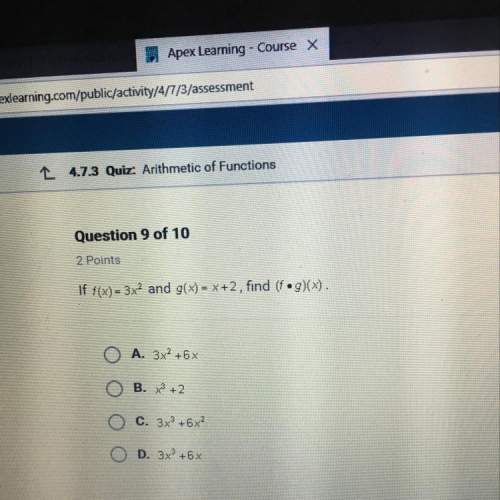
Mathematics, 26.01.2021 23:00 michellemonroe012305
A biology student wants to determine if using a fertilizer would help promote growth of new babies in spider plants. The student has access to 90 spider plants of three varieties: green, variegated, and curly. They all are potted in the same amount and type of soil, given the same amount of water, and exposed to the same amount of light. After one year, the shoots will be counted for each plant.
Which of the following describes a random block design for this experiment?
The plants are numbered 01–90. Using a line from a random number table, the first 45 two-digit numbers, ignoring repeats and the numbers 91–99 and 00, represent the plants that will receive fertilizer. The remaining 45 plants will not receive fertilizer.
The plants are paired together based on similar size and numbered 1 and 2. Within each pair, a 6-sided number cube is rolled. If it lands on 1, 2, or 3, plant 1 receives the fertilizer and plant 2 does not receive fertilizer. If the cube lands on 4, 5, or 6, plant 1 does not receive fertilizer and plant 2 receives fertilizer. This is done for each of the 45 pairs of plants.
The plants are grouped based on variety. There are 30 plants of each variety. The plants within each variety are numbered 1–30, and the numbers are put in a random number generator. The first 15 unique numbers represent the plants in each variety that will receive fertilizer and the remaining 15 numbers will represent the plants in each variety that will not receive fertilizer.
The plants are grouped based on size. The 30 biggest plants are placed in one group and the 30 smallest plants in another other group. The remaining 30 plants are placed in a third group. For each group, a coin is flipped. If the coin lands on heads then the group will receive the fertilizer. If it lands on tails, then the group will not receive fertilizer. Repeat this procedure for the other two groups.

Answers: 1


Another question on Mathematics

Mathematics, 21.06.2019 18:00
Assume that the weights of quarters are normally distributed with a mean of 5.67 g and a standard deviation 0.070 g. a vending machine will only accept coins weighing between 5.48 g and 5.82 g. what percentage of legal quarters will be rejected? round your answer to two decimal places.
Answers: 1

Mathematics, 21.06.2019 18:20
What is the solution set of the quadratic inequality x^2-5< or equal to 0
Answers: 1

Mathematics, 21.06.2019 21:00
Rewrite the following quadratic functions in intercept or factored form. show your work. y = x^2 + 7x + 10
Answers: 2

Mathematics, 21.06.2019 21:00
Find the perimeter of the triangle with vertices d(3, 4), e(8, 7), and f(5, 9). do not round before calculating the perimeter. after calculating the perimeter, round your answer to the nearest tenth.
Answers: 1
You know the right answer?
A biology student wants to determine if using a fertilizer would help promote growth of new babies i...
Questions




History, 13.10.2019 03:10








Mathematics, 13.10.2019 03:10




Mathematics, 13.10.2019 03:10



Social Studies, 13.10.2019 03:10

Mathematics, 13.10.2019 03:10




